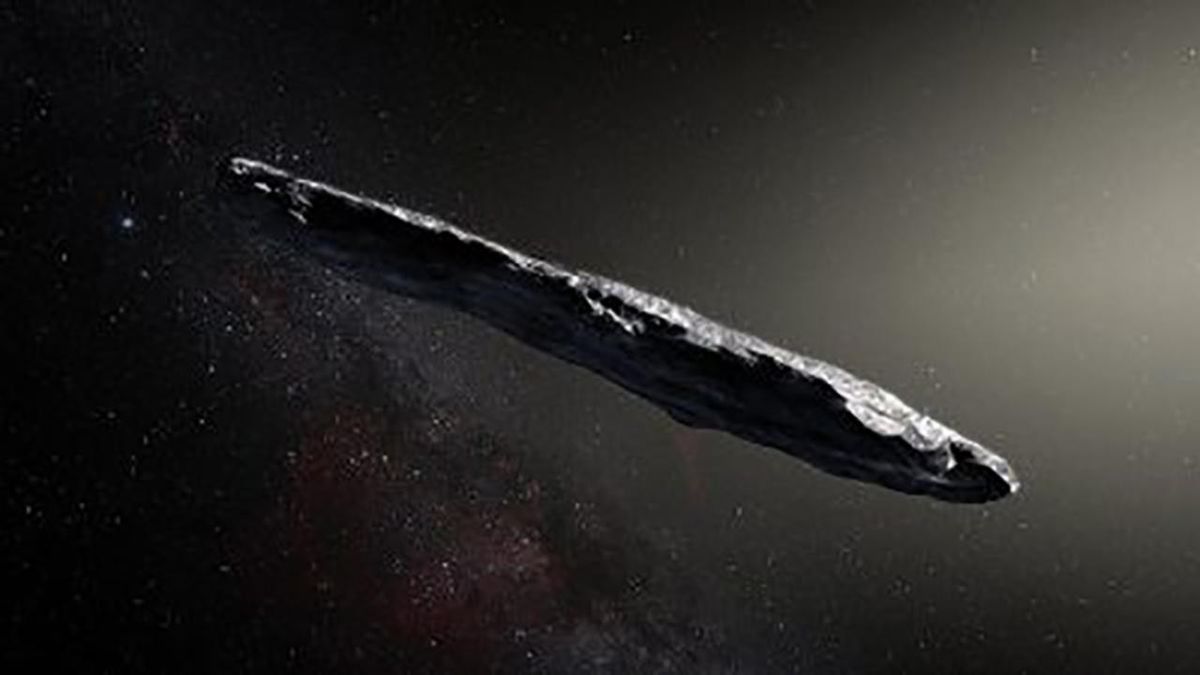JAKARTA - Comet Oumumumua became the first interstellar object to visit Earth from another Solar System in 2017, and became a hot topic of conversation among scientists in history.
Oumumumua has its own appeal to scientists, including its peculiar acceleration as it glides away from the Sun. Other details are still a mystery.
Some people also speculate the object could be an alien spacecraft, which was sent to investigate the Solar System secretly.
However, Oumumumua is not very similar to comets that usually move from the edge of the Solar System. The celestial body has no tail and is circumvented by runaway light, known as a coma, formed by dust and gas heated by the heat of the Sun.
Its shape is also long and small strange, unprecedented in comets or asteroids. The diameter is roughly 100 meters, similar to the size of a football field but according to estimates, some people are 10 times longer in size than their width, shaped like pastries or cigars.
And the shining light from the object, visible, fell from end to end. But the strangest part is that as Oumumumua glides around the Sun, it streaks and deviates from the expected trajectory, driven by a mysterious force as it exits the Solar System.
A new hypothesis, published on March 22 in the journal Nature, provides a different explanation for the orbit of the Oumuamua anomaly.
Astronomers Jennifer Bergner andmanfaat Seligman say the half-mile object is just a comet, but its time in interstellar space changes its chemistry. Instead of causing extra power, Oumumumuaa releases almost invisible hydrogen.
"It's very interesting that we can explain Oumumumua's strange behavior without the need to use any exotic physics," said Bergner, who is also an astrochemist at the University of California, Berkeley and lead author of the new paper.
Comets are chunks of ice and debris left over from the planet formation process, hiding at the end of the Solar System.
In its very long and stretched orbit, they occasionally dive towards the Sun. There, bright sunlight evaporated some of the ice and dust comets to make the coma run away and the tail swept away.
Perhaps, Oumumumua started her life as an ordinary comet around other stars, which were rich in ice water before being pushed out into an open space by the chaos of the young Solar System.
On its way among the stars, Bergner and Seligman said Oumumumua was bombarded with energetic particles known as cosmic rays.
The high-energy particle cut ties between hydrogen and oxygen in water molecules, creating hydrogen molecules trapped in ice crystal structures.
Once the Oumumumua was swung by the Sun, the heat reorganized its ice crystals, releasing hydrogen molecules to drive interstellar interlopers and causing observed accelerations, nearly like rocket boosters.
Citing Popsci, Friday, March 24, Oumumumua was only invisible for a short time when it passed within 15 million miles of Earth in 2017.
Now, the position of the celestial body (Komet Oumumumua) is on the outskirts of Pluto, far beyond reach. Scientists hope that the next-generation telescope, including NASA's James Webb Space Telescope and its newly launched international partner, will see the object.
The English, Chinese, Japanese, Arabic, and French versions are automatically generated by the AI. So there may still be inaccuracies in translating, please always see Indonesian as our main language. (system supported by DigitalSiber.id)













